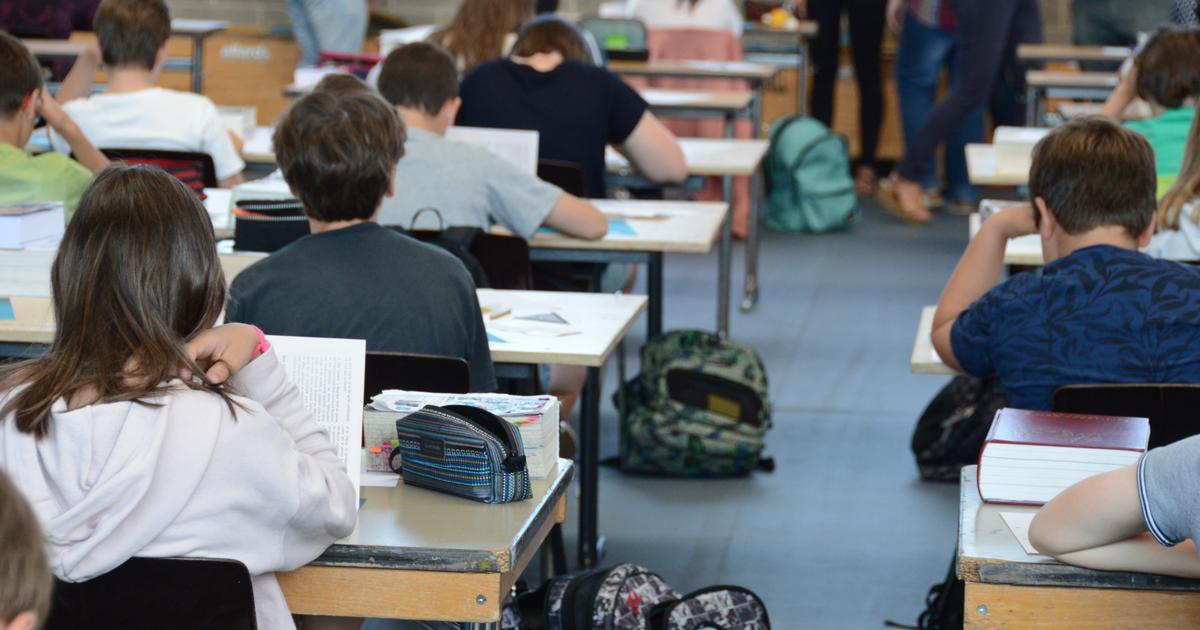Road pollution around schools, the link between ventilation of classrooms and the spread of viruses: studies on the impact of air quality on the health of students have multiplied in recent years.
The question was even central during the Covid-19 epidemic.
This time, Public Health France (SpF) publishes this Tuesday the results of the first quantitative assessment of the health impacts of certain pollutants present in schools.
And according to this report, the 12 million students who return to school each year in France are indeed exposed to pollution which harms their health: several tens of thousands of cases of asthma among schoolchildren aged 6 to 11. would even be avoidable if we reduced their exposure to formaldehyde (a chemical pollutant) and mold.
Also read “Eternal pollutants” in tap water: what impact on health?
You should know that children are more sensitive to air pollution
"
because of the greater volume of air breathed in relation to their weight
"
, remind the authors of the report, but also because their
"
immune and respiratory systems [are] immature.
»
A national survey carried out ten years ago estimated that 12% of CM2 students had already had asthma, a pathology which has exploded
"
since the second half of the 20th century, mainly in industrialized countries
"
.
“Contaminated”
coverings and furniture
Public Health France focused its study on two substances on which it had enough information, thanks to data from the Indoor Air Quality Observatory (OQAI): formaldehyde and mold.
The first is a chemical pollutant present in furniture - particularly wood derivatives such as chipboard, plywood, etc.
- but also glues, paints… In short, from floor to ceiling.
“
We know that new equipment will emit a lot, with exposure then reducing over time ,
”
specifies Marion Hulin, epidemiologist at SpF and co-author of the report.
She adds, however, that we must
“
consider formaldehyde more as a marker of exposure to a larger group of pollutants, volatile organic compounds ,
”
and that it is difficult to dissociate the effect of each.
Regardless,
“
several studies have highlighted links between prolonged exposure to formaldehyde and allergic and/or respiratory effects
,
” according to the report.
As for molds, which develop depending on the humidity, light and temperature of a room, evidence of a relationship between their presence and the development or exacerbation of asthma in children has been established. recently been considered
“
sufficient
”
by ANSES (the National Agency for Food, Environmental and Occupational Health Safety).
Read alsoAir pollution in Marseille: the schools where your child is most exposed
To carry out this first assessment, the authors of the report carried out a literature review on the causal relationships between exposure to these pollutants and asthma.
They also relied on a survey carried out ten years ago by the OQAI on the concentration of these substances in a representative sample of 301 schools, and on an estimate of the number of asthmatic children in France.
They drew various scenarios, depending on whether the classrooms were ventilated or not.
Experts note that nearly 30,000 cases of asthma would be preventable each year in children aged 6 to 11 if we reduced their exposure to formaldehyde, and nearly 12,000 cases of the disease would disappear by getting rid of mold. .
“The first thing: ventilate”
How can we reduce this pollution?
“
The first thing to do is to ventilate,
”
insists Marion Hulin.
Ten minutes, summer and winter, at each recess for example, and during manual activities when students use glue.
Communities can, for their part, choose furniture or coverings that emit fewer pollutants, then store them in another building for a week, when they release the most of these substances, before exposing children.
“
The Covid crisis has highlighted the benefit of these actions for infection risks,”
concludes the epidemiologist.
The message we want to send is that the benefit goes well beyond, on asthma, and even on children's learning.
»
The authors of the report underline the limits of this first evaluation, starting with the uncertainties that remain on the link between exposure to formaldehyde and childhood asthma.
The study also covers observations from ten years ago and should ideally be supplemented by
“
exposure and health data specific to each establishment
”
.
However, it
“highlights the importance of continuing actions to improve air quality”
in schools, indicates SpF... especially when we know that we spend on average 90% of our time in enclosed spaces.

